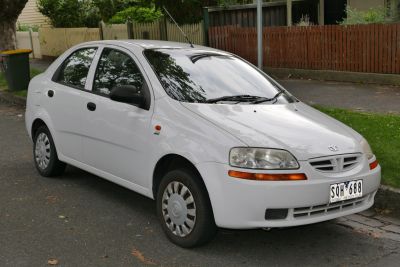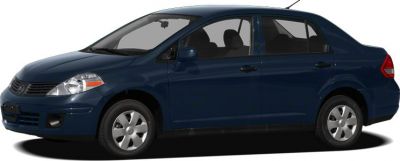 2013 Mitsubishi Attrage (A10) Dimensions, Size & Specs
2013 Mitsubishi Attrage (A10) Dimensions, Size & SpecsMeasurements of the 2013 Mitsubishi Attrage, engineered for optimal performance and comfort
| Dimensions | |
|---|---|
| Length: | 4245 mm167.1 in13.9 ft |
| Width: | 1670 mm65.7 in5.5 ft |
| Height: | 1515 mm59.6 in5.0 ft |
| Ground Clearance: | 170 mm6.7 in0.6 ft |
| Weight Specifications | |
| Curb Weight: | 885-915 kg1951-2017 lbs |
| Tire Specifications | |
| Tire Sizes: |
|
The Mitsubishi Attrage (A10) is a compact sedan produced from 2013 to 2019, designed to cater to drivers seeking an efficient, practical, and affordable urban vehicle. Measuring 4245 mm (167 inches) in length, 1670 mm (65.7 inches) in width, and 1515 mm (59.6 inches) in height, the Attrage offers a balanced footprint that is easy to maneuver in tight city environments while providing sufficient interior space for passengers and cargo. With a curb weight ranging between 885 and 915 kilograms (1952 to 2019 pounds), the Attrage maintains a lightweight profile that contributes to its fuel economy and agility. The vehicle rides at a ground clearance of 170 mm (6.7 inches), which is adequate for handling common road irregularities without compromising stability. Tire choices include 175/65 R14 and 185/55 R15 sizes, supporting a comfortable and controlled driving experience. The Attrage’s dimensions position it well among subcompact sedans, appealing to those who prioritize efficiency without sacrificing practicality. Overall, the Mitsubishi Attrage (A10) stands out as an economical yet spacious sedan ideal for urban commuting and daily driving needs.
Discover the standout features that make the 2013 Mitsubishi Attrage a leader in its class
Have a question? Please check our knowledgebase first.
The Mitsubishi Attrage (A10) sedan, produced from 2013 to 2019, has a length of 4245 mm (167.1 inches), a width of 1670 mm (65.7 inches), and a height of 1515 mm (59.6 inches). These compact dimensions make it suitable for urban and suburban environments, offering ease of parking and maneuverability while maintaining a comfortable cabin space.
The curb weight of the Mitsubishi Attrage (A10) ranges between 885 and 915 kilograms (1,951 to 2,017 pounds). This relatively light weight helps the vehicle achieve better fuel efficiency, which is one of the key appeals of this sedan, especially in city driving where lower mass translates to reduced fuel consumption and improved handling dynamics.
The Mitsubishi Attrage (A10) offers a ground clearance of 170 mm (6.7 inches). This clearance allows the car to handle most urban obstacles like speed bumps and potholes comfortably. However, while it can cope with light rough roads and uneven surfaces, it is not designed for heavy off-roading or rugged terrains where higher clearance would be necessary.
The Mitsubishi Attrage (A10) is equipped with tire sizes 175/65 R14 or 185/55 R15, depending on the specific trim and market. The 175/65 R14 tires offer a balance of comfort and efficiency with a slightly higher sidewall, which can absorb road irregularities better. The 185/55 R15 tires provide a sportier look with improved handling characteristics at the potential expense of a firmer ride.
Yes, the Mitsubishi Attrage (A10) fits comfortably into a standard garage. With a length of 4245 mm (167.1 inches) and width of 1670 mm (65.7 inches), it is compact enough to accommodate typical residential garage dimensions which usually are at least 6 meters (about 19.7 feet) deep and 2.4 to 3 meters (7.9 to 9.8 feet) wide. This makes parking and storage convenient for most homeowners.
The Mitsubishi Attrage (A10) was introduced in 2013 without a direct predecessor under the Attrage nameplate, as it served as a compact sedan variant derived from the Mitsubishi Mirage platform. Compared to the Mirage hatchback, the Attrage is longer and taller, measuring 4245 mm in length versus approximately 3700 mm for the Mirage hatchback. This extended size provides more rear passenger space and trunk capacity, positioning the Attrage as a practical small sedan alternative within Mitsubishi's lineup.
Despite its compact external dimensions (4245 mm length, 1670 mm width), the Mitsubishi Attrage (A10) offers a surprisingly spacious interior. The sedan layout grants more legroom and headroom for rear passengers compared to hatchback models of similar size. Its design optimizes cabin space, providing comfortable seating for four adults with reasonable shoulder and elbow room, making it suitable for small families or daily commuters prioritizing practicality.
The Mitsubishi Attrage (A10) fits well within the subcompact sedan segment, with dimensions competitive to rivals like the Honda Amaze, Toyota Vios, and Hyundai Accent. Its length of 4245 mm (167.1 inches) is typical for the class, while its width of 1670 mm (65.7 inches) is slightly narrower than some competitors, aiding in maneuverability in tight urban settings. The Attrage stands out with its efficient packaging for interior space and relatively lightweight structure, contributing to its appeal in markets emphasizing affordability and economy.
The Mitsubishi Attrage (A10)’s height of 1515 mm (59.6 inches) is typical for subcompact sedans, offering adequate headroom for average height drivers and passengers. Taller individuals might find the rear headroom slightly restrictive, but the front seats generally provide a comfortable seating position with ample vertical space. The vehicle’s design balances compact size with interior comfort, making it a practical choice for most users, although very tall occupants may benefit from testing the cabin space personally.
The compact dimensions of the Mitsubishi Attrage (A10)—with a length of 4245 mm, width of 1670 mm, and ride height of 170 mm—make it exceptionally suited for urban environments. Its narrow width and modest length allow for easy navigation through tight city streets and enable parking in smaller spaces that might challenge larger vehicles. Additionally, the high ground clearance of 170 mm ensures it can handle common urban road imperfections without difficulty, while the light curb weight supports agile handling and fuel economy during stop-and-go traffic.
Discover similar sized cars.

| Production: | 2002-2006 |
|---|---|
| Model Year: | 2002 |
| Length: | 4236 mm166.8 in |
| Width: | 1670 mm65.7 in |
| Height: | 1495 mm58.9 in |

| Production: | 2004-2008 |
|---|---|
| Model Year: | 2004 |
| Length: | 4295 mm169.1 in |
| Width: | 1695 mm66.7 in |
| Height: | 1535 mm60.4 in |

| Production: | 2006-2011 |
|---|---|
| Model Year: | 2006 |
| Length: | 4295 mm169.1 in |
| Width: | 1695 mm66.7 in |
| Height: | 1534 mm60.4 in |

| Production: | 2019-2021 |
|---|---|
| Model Year: | 2019 |
| Length: | 4275 mm168.3 in |
| Width: | 1911 mm75.2 in |
| Height: | 1525 mm60.0 in |
